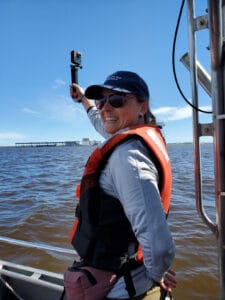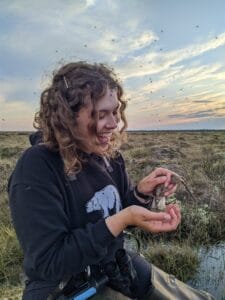Researcher Feature
Chloé Warret Rodrigues
PhD student at the University of Manitoba whose focus species is the fox

Background
I first graduated with a DVM from Liege University (Belgium) and completed a MSc in animal behavior (Paris XIII University, France).
I have worked on a diversity of projects and species, including working as an anesthesiologist on a Jaguar conservation project run by the ONCFS in French Guyana, and as a coordinator for the (French) National Action Plan for the conservation of the Lesser Antillean Iguana in the French West Indies before joining the Churchill Fox Project based at the University of Manitoba, where I enrolled as a PhD student in 2016.
Current Research
The aim of my current research is to understand how red foxes cope with the harsh conditions of the coastal tundra of Western Hudson Bay and how they interact with the ecologically similar Arctic foxes.
Specifically, I am working on answering the following questions:
- What resources do they use and how do they use it to settle and reproduce in a habitat that is not natural for their species?
- What is the potential for competition with the Arctic fox, and what is the magnitude of observed interference between the two species?
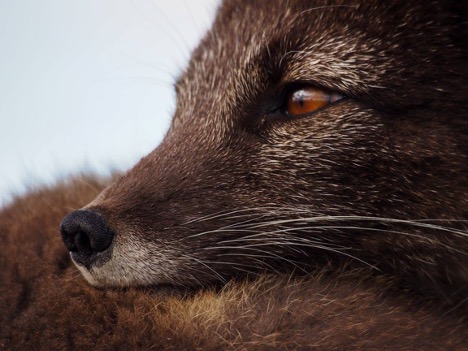
Close encounter
Part of what we do in August is checking fox dens to determine which species occupies the dens and assess reproduction success.
In 2016, my labmate, an ISAMR student, and I were checking a den just by Nester 1 camp, in Wapusk National Park. The pups were out, and a parent came back to the den.
After our check, the three of us started taking pictures of the foxes, lying on the ground and advancing slowly, as to not disturb them. Our plan was to advance until they would display some vigilance sign at which we would have backed up.
Instead of vigilance the parent fox just decided to take a nap, knowing full well we were getting closer – we ended up probably 3 to 5m away from a napping fox who did not even look at us!
Arctic critters are definitely not shy!
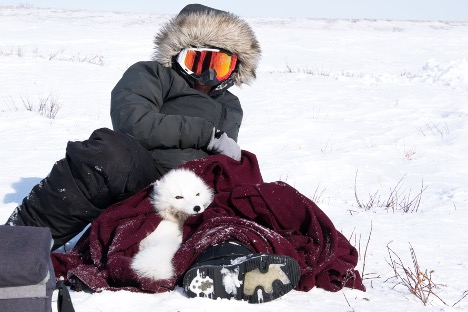
Highlights
My favorite part about conducting my research is the unexpected behaviors from some foxes, when I release them after fitting them with a satellite collar.
Arctic foxes are particularly bold, to the point where they just don’t even bother to go away upon release and prefer to just chill with us! Clearly the blankets we wrap them up with are nice and cozy.
I also love skidooing all over the Churchill and Wapusk area. We get to travel from Churchill all the way down to the South of Owl River to collect our data.
The gorgeous landscapes that vary considerably across the area, Arctic wildlife, sunsets and sunrises, northern lights, and the remoteness are addicting. There is nothing as exhilarating as snowmobiling across the tundra, and living the tundra lifestyle, with our research partners that we see as friends.
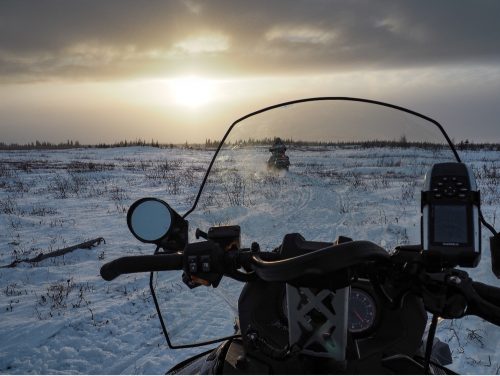
At the CNSC
With my team, we usually spend about 4 months in Churchill every year collecting data for our individual projects as well as our long-term fox survey.
Since my first visit in 2016, the Churchill Northern Studies Centre has provided us with huge logistical help (including skidoo-rescue missions, like when they did a day trip to broad river on Easter weekend because we broke down!), participated in funding our research through the Northern Research Fund, and offered many useful tips from its experienced staff.
I also get to befriend staff and researchers for cool collaboration opportunities from across Canada and abroad!
Meet other Researchers
Research: A Day in the Life
After a stint as a Research Technician with the CNSC, Joni Reimer returned as the Research Coordinator in December of 2022
Read MoreResearcher Feature: C-Jae Breiter
Research Conservation Specialist at Assiniboine Park Zoo with a focus on northern ecosystems
Read MoreResearcher Feature: Olivia Maillet
MSc candidate in Environmental and Life Sciences in Dr. Erica Nol’s lab at Trent University whose focus species are the Stilt Sandpiper and the Short-billed Dowitcher
Read MoreThe Churchill Northern Studies Centre hosts an average of 1,100 research user days in a typical year. Researchers who study at the Centre receive accommodations, equipment, laboratory space, vehicle rentals, and logistical support, all at an extremely affordable rate.
Please consider supporting the CNSC and allowing us to continue offering this critical service.


